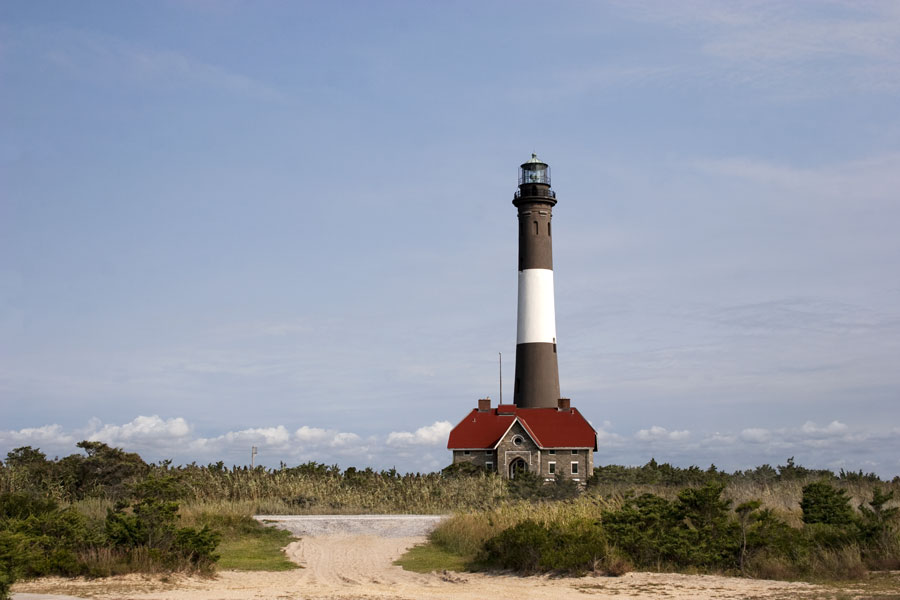Fire Island Lighthouse

The Fire Island Lighthouse is a historic maritime beacon situated on the western end of Fire Island, New York, within the Fire Island National Seashore. An iconic symbol of Long Island’s coastal heritage, the lighthouse has guided mariners through the treacherous waters of the Atlantic Ocean and the Great South Bay for over 160 years. Its rich history, architectural significance, and scenic location make it a beloved landmark and popular destination for visitors.
1. Early Construction:
The original Fire Island Lighthouse was constructed in 1826 to serve as a navigational aid for ships entering New York Harbor. This initial structure stood at 74 feet tall and was built from Connecticut River blue split stone. However, by the mid-19th century, advancements in maritime navigation and the increased volume of shipping traffic necessitated the construction of a taller and more powerful lighthouse.
2. Current Lighthouse:
In 1858, the current Fire Island Lighthouse was completed. This new lighthouse, built from red brick and painted with a distinctive black-and-white band pattern, stands at 168 feet tall. The construction project was overseen by engineer and designer Major General John Newton. The lighthouse’s first-order Fresnel lens, which was state-of-the-art technology at the time, significantly improved the light’s visibility, extending its range to 21 nautical miles.
3. Operational History:
The Fire Island Lighthouse played a crucial role in guiding ships safely to and from New York Harbor, especially during the 19th and early 20th centuries, when maritime traffic was at its peak. The lighthouse was operated by lighthouse keepers who maintained the light and ensured its continuous operation. In 1938, the lighthouse was decommissioned and replaced by a smaller steel tower with an automated beacon. The original Fresnel lens was removed and is now on display at the Franklin Institute in Philadelphia.
4. Restoration and Preservation:
After falling into disrepair, the Fire Island Lighthouse was restored in the 1980s by the Fire Island Lighthouse Preservation Society (FILPS), a non-profit organization dedicated to preserving the historic structure. The restoration project was completed in 1986, and the lighthouse was re-lit as an active aid to navigation. In 2006, the original Fresnel lens was returned to the lighthouse, where it is now on display.
5. Architecture and Design:
The Fire Island Lighthouse is an exemplary model of 19th-century lighthouse design, featuring a tapered brick tower with an iron staircase leading to the lantern room. The tower’s distinctive black-and-white band pattern serves as a daymark, helping mariners identify the lighthouse from a distance. The lighthouse keeper’s quarters and other outbuildings, constructed from brick and wood, reflect the architectural styles of the period and provide insight into the lives of those who maintained the beacon.
6. Visiting the Lighthouse:
The Fire Island Lighthouse is open to the public and offers a variety of educational and recreational opportunities. Visitors can climb the 182 steps to the top of the tower, where they are rewarded with panoramic views of Fire Island, the Great South Bay, and the Atlantic Ocean. The lighthouse’s visitor center features exhibits on maritime history, lighthouse technology, and the natural environment of Fire Island.
7. Educational Programs and Events:
The Fire Island Lighthouse Preservation Society offers a range of educational programs and events for visitors of all ages. These include guided tours, historical reenactments, and special events such as lighthouse climbs, sunset tours, and bird-watching excursions. The lighthouse also hosts educational programs for school groups, focusing on topics such as maritime navigation, coastal ecology, and the history of the Fire Island Lighthouse.

